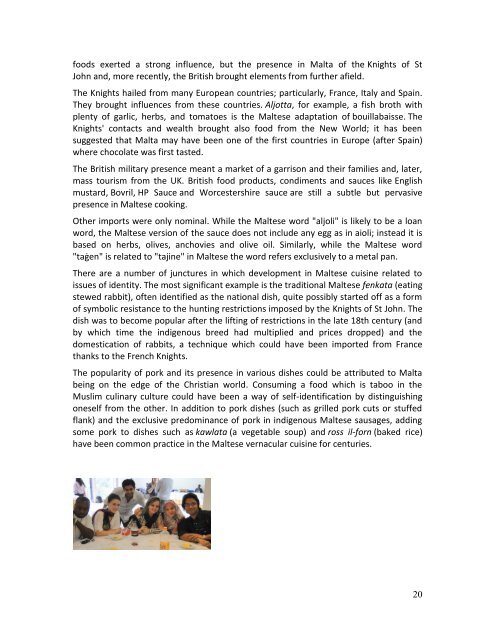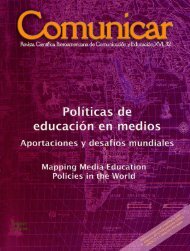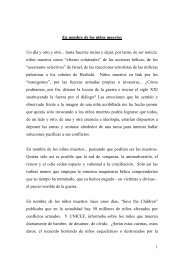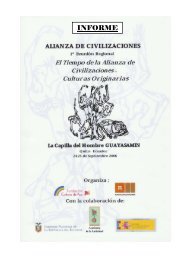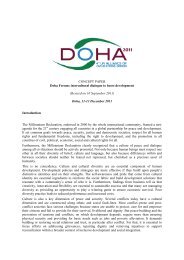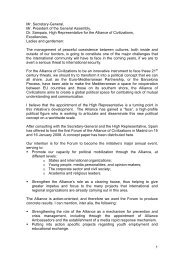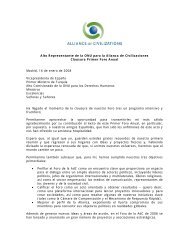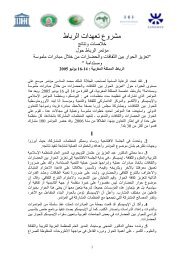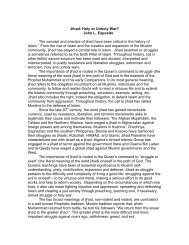detailed information about the 4th UNAOC Summer School
detailed information about the 4th UNAOC Summer School
detailed information about the 4th UNAOC Summer School
You also want an ePaper? Increase the reach of your titles
YUMPU automatically turns print PDFs into web optimized ePapers that Google loves.
foods exerted a strong influence, but <strong>the</strong> presence in Malta of <strong>the</strong> Knights of St<br />
John and, more recently, <strong>the</strong> British brought elements from fur<strong>the</strong>r afield.<br />
The Knights hailed from many European countries; particularly, France, Italy and Spain.<br />
They brought influences from <strong>the</strong>se countries. Aljotta, for example, a fish broth with<br />
plenty of garlic, herbs, and tomatoes is <strong>the</strong> Maltese adaptation of bouillabaisse. The<br />
Knights' contacts and wealth brought also food from <strong>the</strong> New World; it has been<br />
suggested that Malta may have been one of <strong>the</strong> first countries in Europe (after Spain)<br />
where chocolate was first tasted.<br />
The British military presence meant a market of a garrison and <strong>the</strong>ir families and, later,<br />
mass tourism from <strong>the</strong> UK. British food products, condiments and sauces like English<br />
mustard, Bovril, HP Sauce and Worcestershire sauce are still a subtle but pervasive<br />
presence in Maltese cooking.<br />
O<strong>the</strong>r imports were only nominal. While <strong>the</strong> Maltese word "aljoli" is likely to be a loan<br />
word, <strong>the</strong> Maltese version of <strong>the</strong> sauce does not include any egg as in aioli; instead it is<br />
based on herbs, olives, anchovies and olive oil. Similarly, while <strong>the</strong> Maltese word<br />
"taġen" is related to "tajine" in Maltese <strong>the</strong> word refers exclusively to a metal pan.<br />
There are a number of junctures in which development in Maltese cuisine related to<br />
issues of identity. The most significant example is <strong>the</strong> traditional Maltese fenkata (eating<br />
stewed rabbit), often identified as <strong>the</strong> national dish, quite possibly started off as a form<br />
of symbolic resistance to <strong>the</strong> hunting restrictions imposed by <strong>the</strong> Knights of St John. The<br />
dish was to become popular after <strong>the</strong> lifting of restrictions in <strong>the</strong> late 18th century (and<br />
by which time <strong>the</strong> indigenous breed had multiplied and prices dropped) and <strong>the</strong><br />
domestication of rabbits, a technique which could have been imported from France<br />
thanks to <strong>the</strong> French Knights.<br />
The popularity of pork and its presence in various dishes could be attributed to Malta<br />
being on <strong>the</strong> edge of <strong>the</strong> Christian world. Consuming a food which is taboo in <strong>the</strong><br />
Muslim culinary culture could have been a way of self-identification by distinguishing<br />
oneself from <strong>the</strong> o<strong>the</strong>r. In addition to pork dishes (such as grilled pork cuts or stuffed<br />
flank) and <strong>the</strong> exclusive predominance of pork in indigenous Maltese sausages, adding<br />
some pork to dishes such as kawlata (a vegetable soup) and ross il-forn (baked rice)<br />
have been common practice in <strong>the</strong> Maltese vernacular cuisine for centuries.<br />
20


